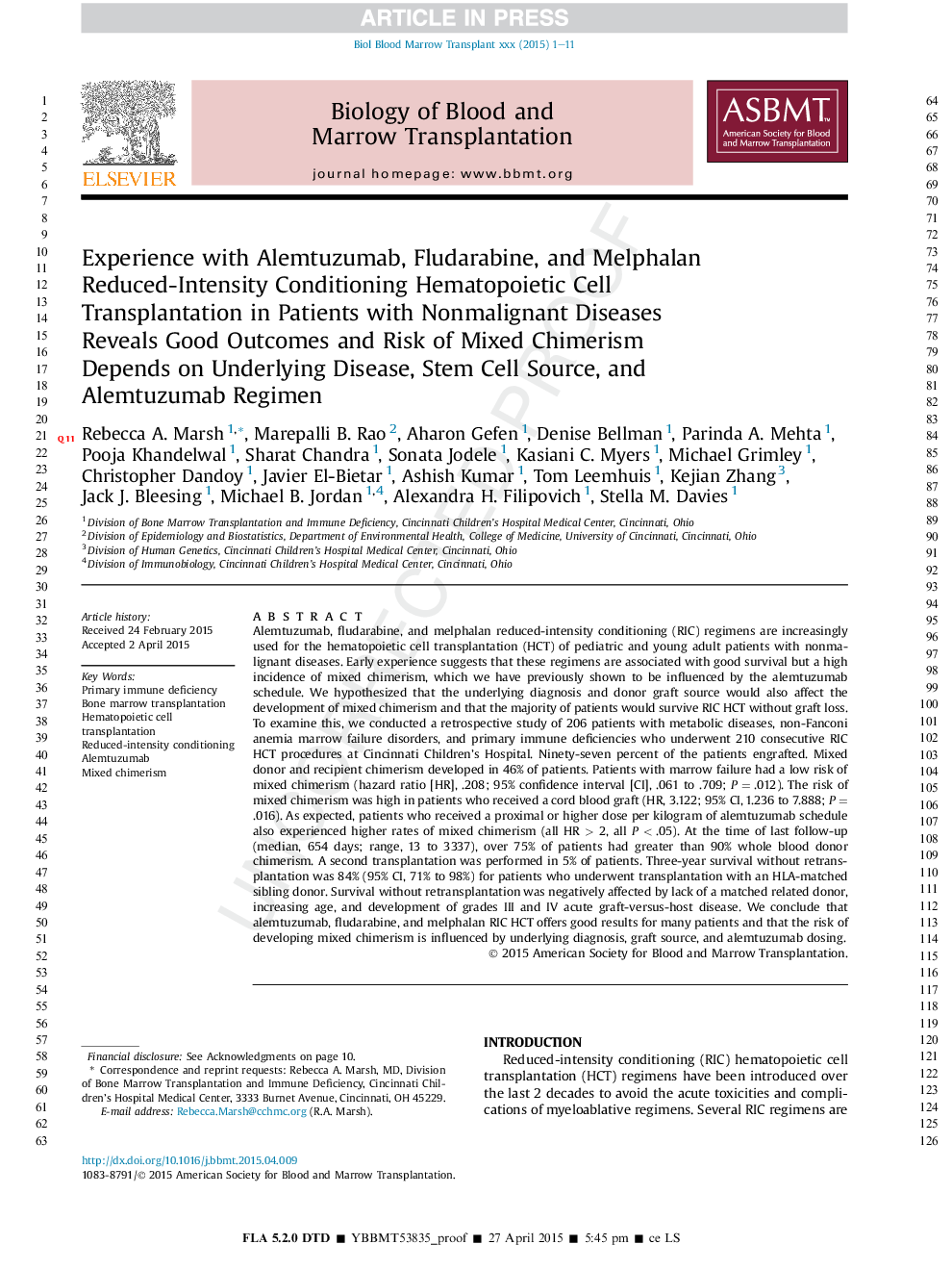| Article ID | Journal | Published Year | Pages | File Type |
|---|---|---|---|---|
| 8431367 | Biology of Blood and Marrow Transplantation | 2015 | 11 Pages |
Abstract
Alemtuzumab, fludarabine, and melphalan reduced-intensity conditioning (RIC) regimens are increasingly used for the hematopoietic cell transplantation (HCT) of pediatric and young adult patients with nonmalignant diseases. Early experience suggests that these regimens are associated with good survival but a high incidence of mixed chimerism, which we have previously shown to be influenced by the alemtuzumab schedule. We hypothesized that the underlying diagnosis and donor graft source would also affect the development of mixed chimerism and that the majority of patients would survive RIC HCT without graft loss. To examine this, we conducted a retrospective study of 206 patients with metabolic diseases, non-Fanconi anemia marrow failure disorders, and primary immune deficiencies who underwent 210 consecutive RIC HCT procedures at Cincinnati Children's Hospital. Ninety-seven percent of the patients engrafted. Mixed donor and recipient chimerism developed in 46% of patients. Patients with marrow failure had a low risk of mixed chimerism (hazard ratio [HR], .208; 95% confidence interval [CI], .061 to .709; PÂ = .012). The risk of mixed chimerism was high in patients who received a cord blood graft (HR, 3.122; 95% CI, 1.236 to 7.888; PÂ = .016). As expected, patients who received a proximal or higher dose per kilogram of alemtuzumab schedule also experienced higher rates of mixed chimerism (all HR > 2, all P < .05). At the time of last follow-up (median, 654 days; range, 13 to 3337), over 75% of patients had greater than 90% whole blood donor chimerism. A second transplantation was performed in 5% of patients. Three-year survival without retransplantation was 84% (95% CI, 71% to 98%) for patients who underwent transplantation with an HLA-matched sibling donor. Survival without retransplantation was negatively affected by lack of a matched related donor, increasing age, and development of grades III and IV acute graft-versus-host disease. We conclude that alemtuzumab, fludarabine, and melphalan RIC HCT offers good results for many patients and that the risk of developing mixed chimerism is influenced by underlying diagnosis, graft source, and alemtuzumab dosing.
Keywords
Related Topics
Life Sciences
Biochemistry, Genetics and Molecular Biology
Cancer Research
Authors
Rebecca A. Marsh, Marepalli B. Rao, Aharon Gefen, Denise Bellman, Parinda A. Mehta, Pooja Khandelwal, Sharat Chandra, Sonata Jodele, Kasiani C. Myers, Michael Grimley, Christopher Dandoy, Javier El-Bietar, Ashish R. Kumar, Tom Leemhuis, Kejian Zhang,
